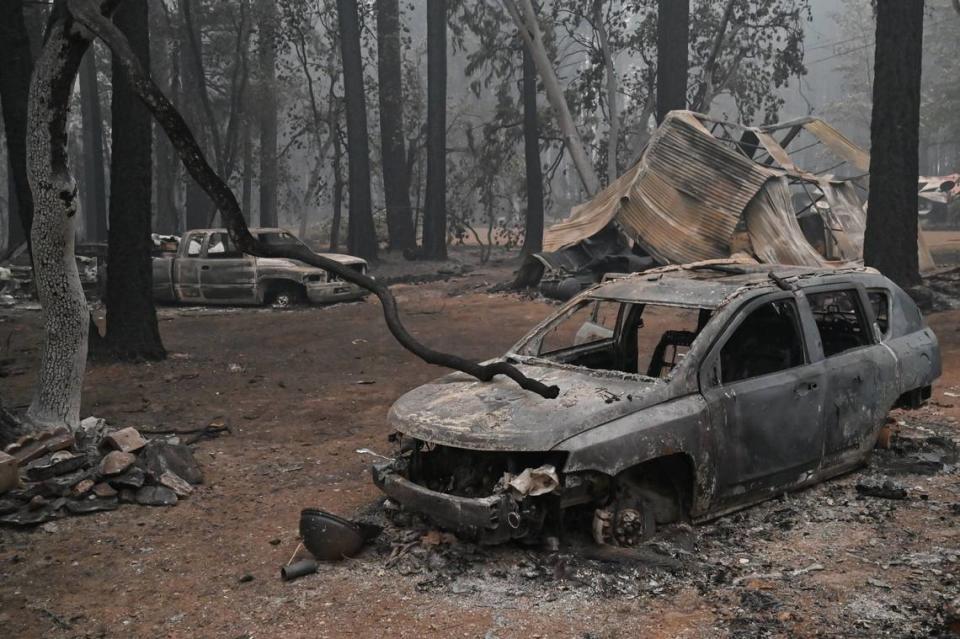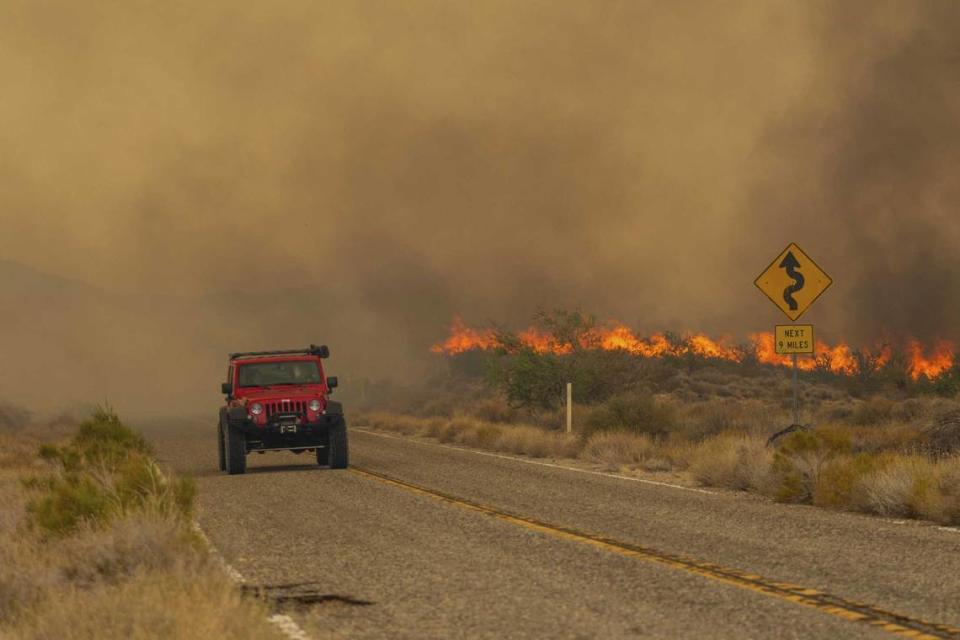After tree trimming declared ineffective, PG&E adopts new wildfire mitigation strategy
PG&E Corp. is axing its enhanced tree-trimming program aimed at reducing wildfire risk after deeming it largely ineffective, the Wall Street Journal reported.
The $2.5 billion program thinned and cleared more than one million trees near power lines across Central and Northern California since it went into effect in 2019, the newspaper said after interviews with executives.
Pacific Gas & Electric, which provides electricity and gas to 16 million across the state, credited the program with reducing total fire ignitions by 7% and ignitions during the fall fire season by 13%.
The embattled utility, which has been blamed for several of California’s worst and deadly wildfires, said it would still trim its backlog of about 385,000 potentially hazardous trees that have yet to be cleared — an effort expected to take nine years.
The Oakland-based company also said it would continue its regular tree-trimming maintenance. Twice per year, the company inspects trees around power lines for hazards. It is also piloting a targeted tree-trim program focused on heavily forested areas of the Sierra Nevada foothills.
The ‘enhanced vegetation management’ program was “put into effect in 2019 based on the best information we had at the time. As we operationalized it, we realized that we needed engineer controls” said Lynsey Paulo, a PG&E spokeswoman. “We can’t identify every tree that imposes a risk. Sometimes you can see a green healthy tree on the outside and not know what it looks like on the inside.”
PG&E’s new strategy relies on a recently introduced setting on power lines that automatically shuts lines off when branches or other objects touch them to reduce the risk of sparks. In 2022, the so-called Enhanced Powerline Safety Settings reduced ignitions by 68%, according to PG&E.
The company’s longer-term plan prioritizes burying one-third of its overhead power lines in high-risk fire areas — 10,000 miles. It will cost an estimated $20 billion and take a decade to complete. Undergrounding power lines reduces ignition risk by 99%, the utility pledged.
In May, California regulators ordered PG&E to pay $150 million in penalties for its role in starting the deadly 2020 Zogg Fire. It caused four deaths and more than $50 million in damages. It started after a pine tree fell on a PG&E power line in the Sierra Nevada Forest.
In 2020, the company was held criminally responsible for 84 counts of involuntary manslaughter and for unlawfully starting a fire after the 2018 Camp Fire. That catastrophic, Paradise-consuming fire left the utility with billions of dollars in liabilities and drove it into bankruptcy.

PG&E is being sued for smoke damage from Dixie and Fly fires
A class-action lawsuit filed by homeowners from 10 Northern California and Nevada counties impacted by the 2021 Dixie and Fly fires. They allege that PG&E caused the fires that exposed them to dangerous levels of air pollutants, which in turn provoked disease and illness.
“The wildfire smoke from the Dixie Fire reached levels of over 40,000 feet, blanketing the counties with thick, heavy smoke for approximately three months,” the lawsuit says.
The Dixie Fire burned nearly a million acres, killing one person and destroying 1,311 structures, according to Cal Fire. At one point in the summer, air quality index readings reached a value of 834 in the Northern California area around the Dixie Fire. AQI above 150 is deemed unhealthy by the California Air Resources Board and the EPA.
A decaying tree fell on a PG&E wire and sparked the fire, Cal Fire’s investigation determined. It “would have been noticeable at the ground level by inspectors pre-fire, without extraordinary effort,” the investigation report says. The lawsuit accuses PG&E of negligence and asks for the establishment of a court-supervised fund to be used for medical monitoring for affected residents.
“We have received the filing and believe the complaint is without merit,” PG&E said in a statement. “We remain focused on reducing wildfire risk across our service area and are committed to doing everything we can to keep our customers and communities safe.”
The lawsuit was filed in San Francisco, where PG&E’s headquarters were located until 2020, by Singleton Schreiber, a law firm with a track record of suing utility companies in the wake of devastating wildfires.
This isn’t the first Dixie Fire-related lawsuit PG&E has faced: in January, the company reached a $24 million settlement with ten public entities.


